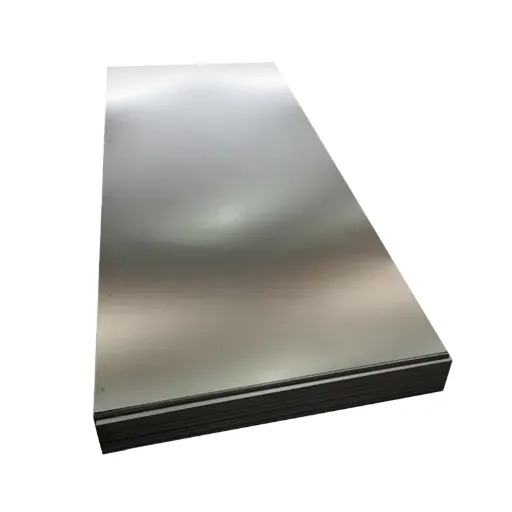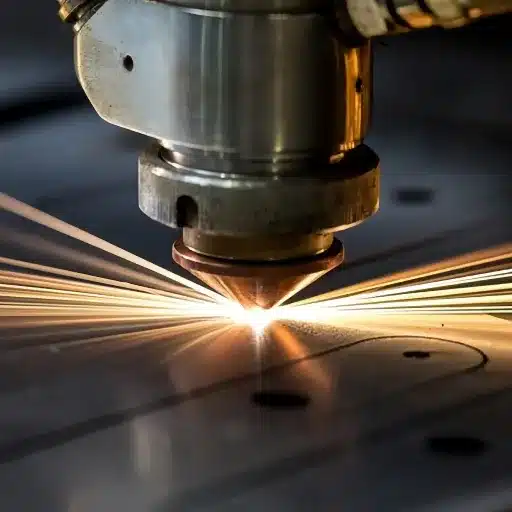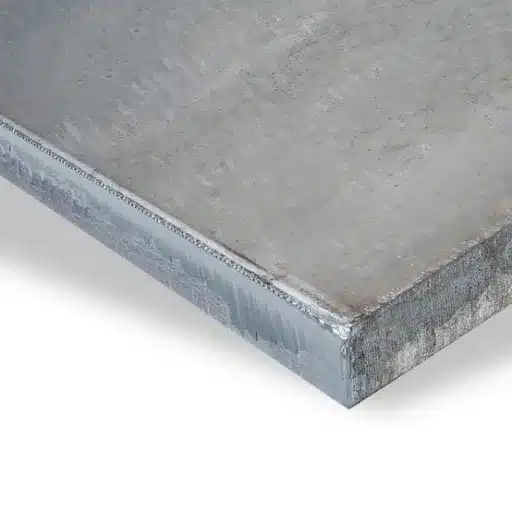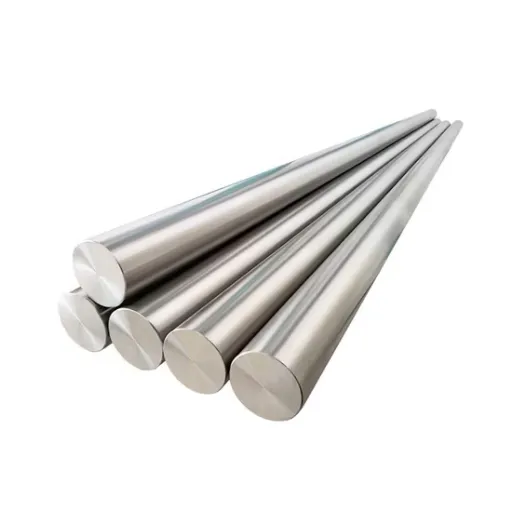Galvanized steel is the foundation of most modern constructions and industrial applications because of its unparalleled durability and resistance to corrosion. Among the various types of galvanized steel available, the S280GD galvanized steel coil is a trustworthy option for projects that require exceptional strength and longevity. But what makes this hot-dipped galvanized steel so worthy? This guide goes deep into all things S280GD steel, including its characteristics, benefits, and applications. The article will provide engineers, construction professionals, and anyone seeking some steel knowledge in-depth information about the S280GD galvanized steel coil and why it remains a hot alternative across industries. Stay with us as we talk about the key features and applications!
What is S280GD Galvanized Steel Coil?
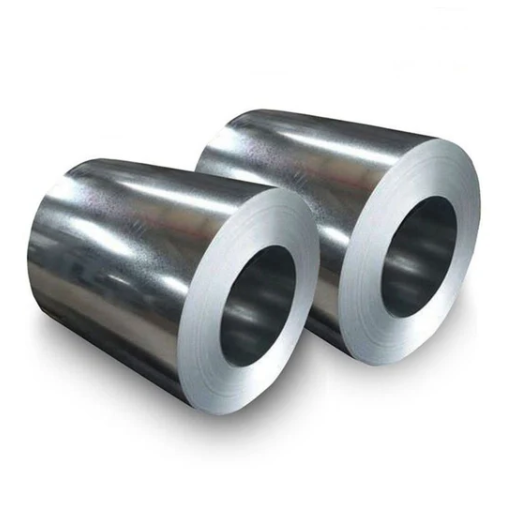
The S280GD galvanized steel coil is a heavy-duty material widely applied in the construction and industrial sectors. It is made by coating steel with zinc through a galvanization process, which preserves it from corrosion and enhances the longevity of the steel. The term “S280GD” refers to its mechanical properties: minimum yield strength equal to 280 MPa, suitable for structural works requiring unusually high mechanical strength. This steel coil is light and highly durable; as such, it is used for roofing, cladding, and other construction purposes wherever longevity and trustworthiness are required.
Composition and Properties of S280GD Steel
S280GD steel is a high-performance material due to its excellent mechanical and structural properties, which find widespread utility in construction and industrial needs. It is a kind of hot-dip galvanized steel, with the major constituent being iron, coated with zinc to impart the utmost corrosion resistance. This zinc coating forms a tight bond with the steel surface, thereby ensuring that both the steel and its zinc layers remain unsullied by corrosion to the utmost degree of environmental harshness.
- Technical Specifications:
- Yield Strength: Minimum 280 MPa
- Tensile Strength: Usually lies between 360 MPa and 510 MPa
- Elongation at Break: ≥ 18% (varying with thickness)
- Zinc Coating: The coating weights may vary from 100 g/m² to 350 g/m² according to the application, ensuring anti-corrosion properties.
- Thickness Range: It usually lies between 0.30 mm and 3.0 mm, but it may be deviated from this range depending on design requirements.
- Surface Finish: Both smooth and textured finish can be requested depending on aesthetic and functional requirements.
- Applications:
Further, considering its relatively greater durability, corrosion resistance, and comparatively lightweight nature, S280GD steel finds applications primarily in:
- Roofing sheets and profiles for residential and industrial buildings.
- Wall cladding and structural panels.
- Concrete reinforcements.
- Agricultural equipment, silos, storage tanks.
Benefits of S280GD Steel:
- Durability: The zinc coating permits the material to survive longer in adverse outdoor conditions.
- Versatility: A pretty good balance of strength and ductility makes it easy to process into bending and forming.
- Sustainability: Completely recyclable during the completion of its life cycle, so environmentally responsible.
- Cost-Effective: Maintenance and repair costs further decrease because of added protection.
Pairing strength, resiliency, and fast application, S280GD steel remains the choice of many in structural and architectural design. Its adaptability ensures it remains a trusty asset in any modern-day construction requirement.
Properties of Galvanized Steel Coil
- Corrosion-Resistant: Galvanized steel coils are coated with zinc, which gives them excellent resistance against corrosion and rust even in a dubious environment.
- Durability: Zinc coating ensures longevity, making it highly durable and applicable in outdoor and industrial setups.
- Thickness Options: Has numerous thicknesses to satisfy different requirements and structural concerns.
- Aesthetic: Bright, smooth finish that adds to the look and can work for functional or decorative purposes.
- Good Formability: Well flexible, so it can be easily bent or cut according to their needs and designs.
Applications of S280GD Galvanized Steel
| Application Area | Key Uses |
|---|---|
| Construction | Roofing, wall panels, and structural supports |
| Automotive | Chassis, body panels, reinforcements |
| Appliances | Refrigerator panels, washing machine drums |
| Agriculture | Greenhouses, silos, farming equipment |
| HVAC Systems | Air ducts, ventilation, heat exchangers |
| Facade Cladding | Sandwich panels, profiled sheets |
| Solar Mounting Systems | Frames, substructures |
| Drainage Components | Gutters, downpipes, rainwater collectors |
| Industrial Equipment | Storage tanks, light frameworks, and machinery parts |
How is Hot Dip Galvanized Steel Coil Manufactured?
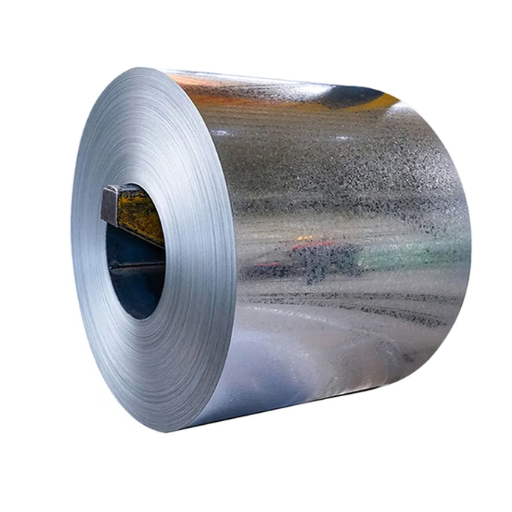
The steel coils’ hot dip galvanizing process finely regulates different processing parameters. In the initial cleaning phase, the steel coil removes dirt, grease, and oxides to ensure the coating surface’s cleanliness. The preparation is followed by dipping the cleaned steel into molten zinc baths, allowing zinc to bond to the surface to form a protective layer. After the dipping operation, the coils are cooled down and inspected for uniformity and coating quality. The entire procedure imparts corrosion resistance to the steel surface, making it usable and applicable in various construction activities, manufacturing processes, and much more.
The Hot Dip Galvanizing Process
The hot-dip galvanizing process is generally considered one of the best ways to prevent rust and corrosion on steel and significantly improve its life. According to industry specifications, this process typically provides a zinc coating on steel ranging from 50 to 150 microns, depending on the size of the steel, its composition, and the length of immersion. Some studies have said galvanized steel needs little maintenance and can last 50 to 100 years in rural and urban areas. In contrast, it offers protection for 20 to 50 years in heavily aggressive industrial or marine conditions.
The factors affecting zinc coating structure and quality include temperature, time of immersion, and metallurgical structure of the base material. The temperature of the zinc bath is generally maintained at 820°F to 860°F (438°C to 460°C) for proper bonding. Pre-treatment procedures such as pickling and fluxing also remove contaminants on the surface, helping to get a uniform coating. Post coating, the steel is rapidly cooled while hanging in air or by water quenching to set the value into a protective layer.
The hot dip galvanizing is a green process. Some reports claim that approximately 30 percent of the zinc produced worldwide is used for galvanizing and is entirely recyclable. Galvanizing protects and, therefore, does not require maintenance or replacement, bringing down the cost, including the adverse environmental effects of engineering, at a later date. For this, galvanized steel is preferred for structural beams and roofing in construction, guard rails and bridges in transportation, and windmills and solar panel frameworks in energy.
Technological advances have improved efficiency and sustainability. Modern plants incorporate containment systems that reduce emissions to a minimum, ensuring the health of the workers and the environment. These improvements have ensured that the hot dip galvanizing process can continue to serve the needs of the increasingly sustainable and efficient industrial processes.
Role of Zinc Coating in Protection
| Aspect | Role of Zinc Coating |
|---|---|
| Corrosion Resistance | Forms barrier against moisture and oxygen |
| Sacrificial Protection | Zinc corrodes before the underlying steel |
| Self-Healing | Zinc carbonate fills scratches or damages |
| Durability | Extends service life in harsh environments |
| Adhesion | Strong bond ensures long-term protection |
| Heat Resistance | Withstands high temperatures in specific coatings |
| Aesthetic Benefits | Provides smooth or textured finishes |
| Environmental Impact | Recyclable and eco-friendly material |
Standards like ASTM and JIS
Standards like ASTM and JIS have their say in assuring quality and uniformity in the galvanizing processes. So, I rely on these standards to set out fine conditions for coating thickness, adhesion, and durability. Complying with ASTM or JIS specifications means bearing the coat of zincing that meets internationally accepted standards and will reliably keep corrosion at bay through various intended applications. Such standard methods would guarantee the utmost performance and reputation in establishing the longevity and safety of the galvanized articles.
What are the Advantages of S280GD Hot Dipped Galvanized Steel?
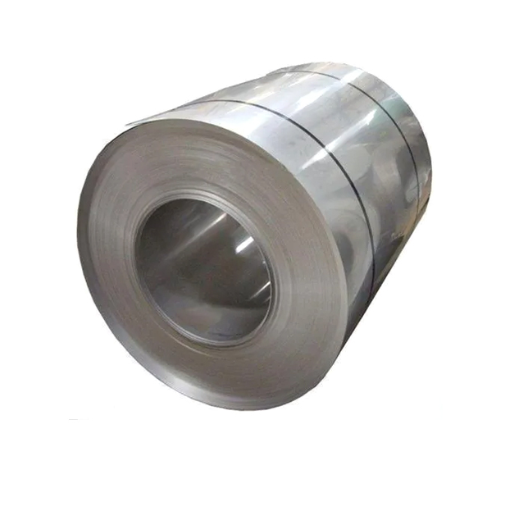
Here are a few advantages offered by hot-dipped galvanized steel S280GD:
- Corrosion Resistance – The zinc coating provides the highest rust and environmental resistance, so time-equipped could endure ecological attacks.
- Strength—The S280GD steel design provides structural competition; thus, it is critical in demanding construction and engineering applications.
- Maintenance Cost-Efficiency: Due to less probable breakage or damage, galvanized coating reduces maintenance costs.
- Application Area—This steel grade is applicable to various areas, such as roofing, cladding, and even automotive components.
- Adherence to Standards: Manufactured under quality rules that ensure consistent performance and reliability across varied projects.
Corrosion Resistance and Durability
Due to the advanced protective coatings and treatment processes, this particular steel grade exhibits outstanding corrosion resistance and durability, making it ideal for long-term usage under extreme environmental conditions.
Cost-Effectiveness of Galvanized Coil
| Aspect | Key Points |
|---|---|
| Initial Cost | Higher than non-galvanized steel |
| Maintenance Savings | Reduced need for repairs and replacements |
| Durability | Long lifespan reduces long-term costs |
| Corrosion Resistance | Zinc coating prevents rust and extends life |
| Versatility | Suitable for diverse applications |
| Environmental Impact | Recyclable, reducing material waste |
| Ease of Fabrication | Supports cutting, bending, and welding |
Ecological Benefits of Galvanized Steel
Galvanized steel is a sustainable material that affords many environmental benefits and thereby has been favored in modern construction and manufacturing. Its other major advantage is a longer lifespan, which reduces replacement and natural resource consumption. Some studies say galvanized steel can last over 50 years under rural conditions or sometimes up to 25 years in severe urban conditions with little maintenance. This capacity to last enhances the environmental advantages, as the demand for more intensive resources for manufacturing and transportation is reduced.
Another significant advantage of its lifetime is recyclability. Galvanized steel can be recycled 100% without losing its structural integrity or value in producing new products. This feature accommodates the circular economy by reducing waste that would have otherwise gone to landfills. With a recycling rate of about 85%, steel remains one of the most recycled industrial materials on Earth—Amalgamated World Steel Association.
The other advantage of galvanization nowadays is the efficiency of energy consumption. There have been advances in technology in zinc use, which also reduce emissions during production. Cleaner and more efficient production fits with the global agenda for reducing greenhouse gas emissions in industrial sectors.
Here comes another advantage to reduce resource depletion: zinc used for galvanizing occurs naturally in abundance and can be used repeatedly. This creates a positive environmental impact because the secondary ability of the zinc coating to confer exceptional corrosion resistance reduces the need for energy-intensive coatings or paints and consequently reduces the overall carbon footprint of the infrastructure and products throughout their service life.
All these environmental benefits make galvanized steel an environmentally conscious choice for industries seeking sustainable and durable materials, making it a key player in a greener future.
How to Choose the Right Galvanized Steel Coil?
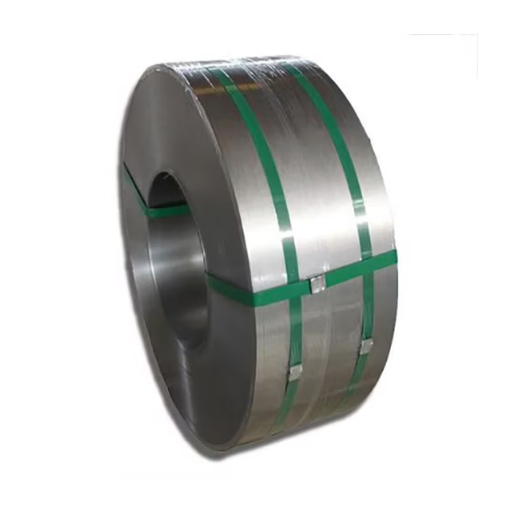
- Coating Thickness—Choose a coating thickness consistent with the environment in which the steel will be used. Thicker coatings are advisable for highly corrosive situations, while standard coatings will suffice for less harsh conditions.
- Grade and Strength – Consider the grade and tensile strength required in the application. The coil used should meet the specifications for performance in terms of durability and load-bearing capacity.
- Intended Use – Find out if the steel will be used for roofing, construction, manufacturing, or any other specific purpose, as this differs between specifications.
- Surface Finish—Choose the surface finish appropriate for aesthetic purposes or further processing, such as painting or forming.
- Supplier Reliability—Select a supplier with a good reputation for maintaining consistent quality, certifications, and industry standards.
- Budget and Cost Efficiency – Find a balance between quality and price so your material does not exceed financial constraints.
A thorough evaluation of all these factors will help you select the most suitable galvanized steel coil for your application.
Factors to Consider: Coating and Thickness
The coating and thickness determine almost every other parameter, such as life, corrosion resistance, and the best-suited application, while choosing galvanized steel coils. Consider the few detailed issues listed below:
- Type of Coating and Weight
Galvanized steel coils are zinc-coated, and there are different types of coatings based on production; the general types are an HDG (Hot Dip Galvanized) and an electro-galvanized one. Zinc coating weight, expressed in “grams per square meter” (g/m²), and corrosion-resistant ability go hand-in-hand. For example, the coating for galvanized steel coils usually lies between 60 and 275g/m². Outdoor constructions need more durable coatings, i.e., about 275g/m².
- Uniformity of Coating
Uniform coatings provide homogeneous protection against corrosive attack. As such, any variance in the coating’s thickness will present weak spots, making the material less durable. Select products that comply with norms such as ASTM A123 and ISO 1461, as they set the minimum thickness and uniformity requirements for coatings.
- Base-metal Thickness
Base metal thickness should correspond to the assignment in view. Generally, heavier galvanized steel coils of 1.5 mm and 3 mm thickness are used for construction and automotive applications where mechanical strength plays an important role. Thinner steel coils, less than 1 mm, are used primarily for roofing, siding, and ductwork as they are lightweight.
- Performance about Environmental Conditions
Coating design and thickness must be tailored to the environmental conditions under which steel will be used. A high zinc coating weight is recommended to prevent jerk corrosion in coastal or highly humid atmospheres. It has been reported that a coating weight of 275g/m² can enhance product lifespan considerably over lower weights under more severe environmental conditions.
- Advancements in Coatings
ZAM (zinc-aluminum-magnesium) coatings developed recently are tougher against corrosion than conventional zinc-only coatings. High-performance coatings help sustain thin coatings in harsh environments.
Suppose all factors are considered together, such as coating type, weight, base metal thickness, and knowledge of how each factor performs under its working environmental condition. In that case, one can be sure they picked a galvanized steel coil to satisfy day-to-day working life and long-term expectations.
Understanding Steel Grades like 1.0244
| Aspect | Key Points |
|---|---|
| Grade Name | S280GD |
| Material Number | 1.0244 |
| Classification | Non-alloy quality steel |
| Standard | EN 10346 |
| Yield Strength | Minimum 280 MPa |
| Tensile Strength | Minimum 360 MPa |
| Elongation | Minimum 18% |
| Chemical Composition | C ≤ 0.20%, Mn ≤ 1.70%, Si ≤ 0.60% |
| Coating Types | +Z, +ZF, +ZA, +ZM, +AZ, +AS |
| Applications | Construction, automotive, appliances, agriculture |
Compared to Other Steel Coil Types
| Aspect | Galvanized Steel Coil | Cold-Rolled Steel Coil | Aluminum Coil |
|---|---|---|---|
| Corrosion Resistance | High, due to zinc coating | Low, prone to rust | High, natural oxide layer |
| Weight | Heavier than aluminum | Similar to galvanized | Lightweight |
| Durability | Long-lasting, resistant to weather | Moderate, needs protection | Durable, especially in humid areas |
| Aesthetic Options | Limited, metallic appearance | Smooth surface, customizable | Wide range of finishes and colors |
| Formability | Good, suitable for shaping | Excellent, precise dimensional control | Excellent, highly malleable |
| Cost | Moderate, cost-effective long-term | Lower initial cost | Higher initial cost |
| Applications | Construction, automotive, appliances | Precision parts, structural components | Aerospace, packaging, electronics |
Where to Buy S280GD Galvanized Steel Coil?
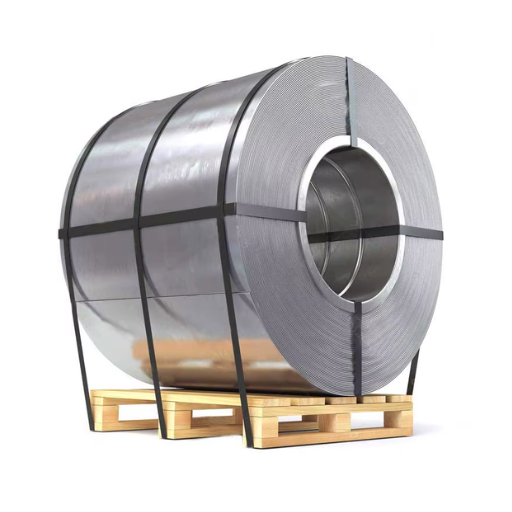
S280GD galvanized steel coils are generally purchased from reputable steel makers, approved distributors, or specialized metal suppliers. Some sources are listed below:
- Local Steel Distributors: Reach out to suppliers catering to construction, automobile, or manufacturing industries.
- Online Steel Marketplace: Thyssenkrupp, Tata Steel, and ArcelorMittal are places a buyer can easily purchase.
- Direct from the Manufacturer: The big names, such as SSAB, Voestalpine, or Salzgitter, sometimes sell directly or distribute through their channels.
Verify product specifications and certifications before purchasing to ascertain suitability for your project.
Finding Reliable Galvanized Steel Coil Manufacturers
Search on Google to get reputable names such as Nippon Steel, POSCO, or Baosteel, and then double-check their reputation through online customer reviews and industry certifications.
Assessing Supplier Quality and Certifications
While analyzing the quality of galvanized steel coil manufacturers, several factors regarding reliability and conformity with industry standards must be considered. For starters, analyze the supplier’s certification. More popular certifications include ISO 9001 for quality management systems and ISO 14001 for environmental management, which certifies that the manufacturer follows rigorous production standards and has met specific environmental standards.
Check out the supplier’s track record through buyer reviews and feedback. Trustpilot, Alibaba, and similar industry forums are places where actual buyers post their feedback concerning a supplier. Another critical fact to consider is the supplier’s manufacturing capacity and product technology. This is why manufacturers consider Nippon Steel as a first-class supplier with state-of-the-art production facilities and is all certified for having high-quality output. In contrast, Baosteel and POSCO are equally renowned for their technologically advanced processes.
Compare suppliers on price transparency, delivery reliability, and product warranties using the latest insights from Google search. For example, recent reviews suggest that suppliers such as Shandong Zhongcan tend to be competitively priced and offer good after-sales service, so they are a good choice for large volume orders. Cross-reference such insights with manufacturers whose standards and consistency are well known to you. Always obtain full specifications and material test reports for all supplier products to meet your project criteria.
Pricing and Market Trends
In pricing and market trends, attention is paid to the current demand and supply dynamics for steel and the changes in raw material costs, such as iron ore or coal. The world economy and trade policies are also worth paying attention to since pricing depends directly on them. Knowing the ups and downs of these trends helps me buy at just the right time to balance the project’s costs and requirements.
References
- Structural Behaviour of Cold-Formed Steel Beams Subjected to Fire
This paper discusses the structural behavior of cold-formed steel beams under fire conditions, including S280GD+Z steel grade. It provides insights into the material’s performance and design considerations.
Source: Academia.edu - Cold Form Steel.pdf
This document provides a comprehensive overview of cold-formed steel, including its properties, applications, and design principles. It also covers the use of S280GD steel in various structural contexts.
Source: Academia.edu - Systematic Literature Review of Cold-Formed Steel at Elevated Temperature Scenario
This systematic review compiles recent research on cold-formed steel, including S280GD, focusing on its behavior under elevated temperatures. It evaluates experimental and numerical studies and highlights gaps in current research.
Source: PubMed Central (PMC)
Frequently Asked Questions (FAQ)
Q: What is S280GD galvanized steel coil?
A: S280GD galvanized steel coil is a hot-dipped galvanized steel known for its high strength and excellent corrosion resistance. Due to its durability and protective zinc coating, it is commonly used in construction and manufacturing.
Q: How does S280GD differ from other galvanized steel sheets?
A: S280GD differs from other galvanized steel sheets in its specific mechanical properties and coating weight. It is designed for high-strength applications and complies with the steel coil en 1.0244 standard for quality assurance.
Q: What are the applications of S280GD galvanized steel coil?
A: S280GD galvanized steel coil is used in a variety of applications including automotive, construction, and machinery. It is particularly popular for making galvanized steel plates, structural steel components, and galvanized steel sheet in coil form.
Q: What is the significance of z275 in galvanized steel?
A: Z275 refers to the coating weight of zinc applied to the galvanized steel, measured in grams per square meter. It indicates a medium level of zinc coating, providing good corrosion resistance for the steel plate.
Q: How does hot-dip galvanizing work for S280GD steel?
A: Hot-dip galvanizing involves dipping S280GD steel into a bath of molten zinc, which bonds with the steel to form a protective layer. This process enhances the corrosion resistance and longevity of the steel coil product.
Q: What are the benefits of using galvanized steel strip coil?
A: Galvanized steel strip coil offers several benefits including improved durability, resistance to rust and corrosion, and a long lifespan. It is also easy to fabricate and weld, making it versatile for various industrial applications.
Q: What is a regular spangle in galvanized steel?
A: A regular spangle refers to the typical crystal pattern seen on the surface of a galvanized steel sheet. It is a natural result of the hot-dip galvanizing process and can be controlled for aesthetic purposes.
Q: What does “gi rolls hot dipped galvanized” mean?
A: “GI rolls hot dipped galvanized” refers to galvanized iron rolls that have been coated with zinc through the hot-dip process. This technique enhances the rolls’ corrosion resistance and is a common term for discussing galvanized steel coil products.
Q: How is alloy steel different from galvanized steel strip?
A: Alloy steel is made by combining steel with other elements to enhance its properties, such as strength and toughness. In contrast, a galvanized steel strip is primarily regular steel coated with zinc for corrosion protection, without altering its internal composition significantly.


